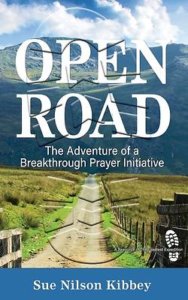Sue Nilson Kibbey says churches often focus so much on organizational maintenance that they lose sight of the church’s ultimate spiritual mission. She challenges us to think about whether we operate with the mindset of an organization or a movement intent on transforming the world.
Reflect on your own church right now — whether you are a pastor, staff person, leader, or member. Do you view your church as an organization or a movement? How you think of your church will determine not only your priorities but also your energy investment and actions. It will define how you lead and to what extent you live into what the church of Jesus Christ is intended to be.
An organization mindset
I’ve spent years as a church pastor myself. I know it’s easiest to migrate towards managing your church as an ongoing set of logistics to be administered and maintained, kept staffed with volunteers to handle duties, and financially sustained by the contributions of it members. Other indications of an organization mindset often include these:
- Routinely relying on church leaders’ or staff’s professional expertise and previous experience as our main source of directional wisdom.
- Using projected limitations of the current bank account balance to automatically restrict new potential ministry opportunities.
- Endlessly discussing and debating our own ideas about what might be humanly possible in our circumstances.
- Urging more church members to step up and help with the plans that leadership has laid out but seeing little response.
- Listening to the voices of disappointment, discouragement, and helplessness both within ourselves and spoken by others regarding our congregation’s future.
A movement mindset
What might happen if you and your leadership instead began to view and lead your church as a movement? According to one dictionary, a movement can be defined as “a rapid progression of events” or “a series of actions and activities trending towards a new direction.” That’s quite a different picture from working hard to push a stagnant church forward through organizational maintenance and fine tuning, isn’t it? Indications of a movement mindset for church leaders might include:
- Rather than offering a quick “bookend” prayer to open and end leadership meetings or a short prayer to set the stage before every agenda item, ask God to open new doors and bring new ideas, to anoint us with new spiritual ears to listen and hear, and to give us willingness to set aside our own accustomed preferences.
- Instead of a scarcity attitude as we assess our resources, budget, or volunteer corps for the future, the leadership team’s most urgent and important responsibility shifts from asking each other, “What should we do next?” to asking God what God wants to do in and though our church, and through us.
- And with a movement mindset, what if we both modeled ourselves and brought/taught the entire congregation the miraculously motivational ingredient of the kind of prayer Jesus taught us, which I call a church-wide breakthrough prayer initiative?
The church of Jesus was never meant to be merely a group of goodhearted, inwardly focused religious people, collective energy invested in caring for one another, ensuring adequate building upkeep for in-person activities, and managing finances to keep everything afloat. Instead, the distinguishing hallmark of the movement of Christ followers called the Church is to be an expectant focus up and out in pursuit of uncharted spiritual adventures to embrace and transform the world.
Excerpted from Open Road: The Adventure of a Breakthrough Prayer Initiative (Market Square Books, 2021) by Sue Nilson Kibbey. Used by permission. The book is available at Cokesbury and Amazon. For more information about using the book, ways to order, and bulk discount codes visit openroadchurch.com.
Related Resources
- Prayer is the Spiritual Electricity of Congregational Revitalization by Sue Nilson Kibbey
- “Congregational Renewal Begins with Breakthrough Prayer,” a Leading Ideas Talks podcast episode featuring Sue Nilson Kibbey
- Discovering God’s Vision for Your Congregation Video Tool Kit







